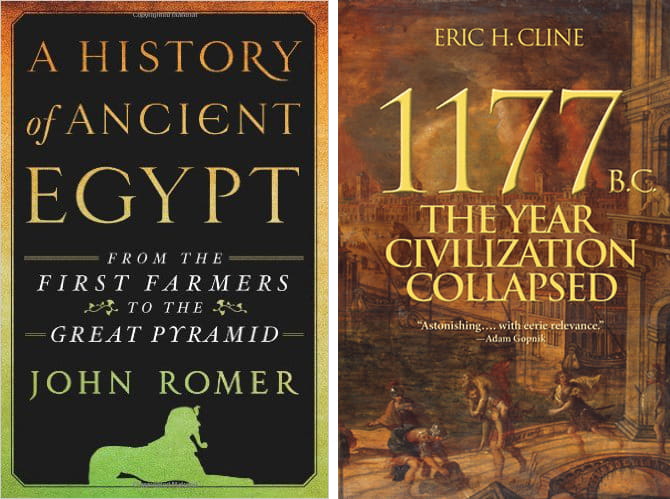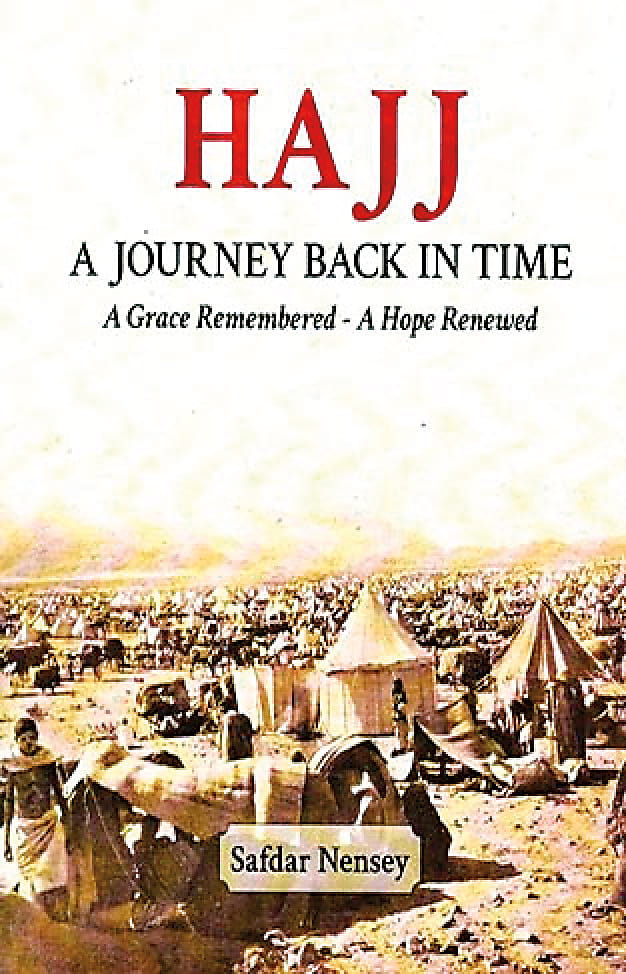
A History of Ancient Egypt: From the First Farmers to the Great Pyramid / 1177 BC: The Year Civilization Collapsed
Tom Verde
John Romer / Eric H. Cline
2012, Thomas Dunne Books, 978-1-25003-011-5, $29.99 hb / 2014, Princeton UP, 978-0-69114-089-6, $29.95 hb.
It is startling to realize that when the oldest Giza pyramid was completed some 5,000 years ago, Egyptian civilization was already more than 25 centuries old. Put another way, we are today as chronologically far removed from the founding of Rome in 753 BCE as were Egypt’s first-century BCE Roman conquerors from the establishment of the first Pharaonic dynasty, which itself emerged from a culture that was already 2,000 years old. The antiquity of Egyptian civilization as well as the lasting impact of decisive events during its long history are the subjects of these two fresh surveys. Romer’s work—the first of two planned volumes—takes readers back to the first Egyptian farmers who settled in the Faiyum Oasis in the northern lower Nile around 5000 BCE. Within 1,500 years, he writes, their descendants “were building pyramids for pharaoh.” The steady development of Egyptian culture from settled farmers to herding pot-makers, copper-smelters and traders, to tomb-builders, hieroglyph-makers, mathematicians, engineers and imperial rulers unfolds in this narrative, which ends with the building of the Great Pyramid of Khufu in the third century BCE. While Romer takes the broad view, Cline zeroes in on 1177 BCE, when the mysterious “Sea People” launched their unsuccessful invasion of Egypt as a critical moment in not only Egypt’s history but also that of neighboring Bronze Age civilizations including Minoa, Mycenae, Troy and Babylon. A volume in Princeton’s Turning Points in Ancient History series, Cline’s study credits these civilizations’ sudden decline to circumstances beyond the “convenient scapegoat” of marauding Sea Peoples to consider earthquakes, drought, revolts and trade disruptions. The result was a “‘Perfect Storm’ of Calamities” that brought the Bronze Age to a cataclysmic end, opening the way for civilizations to “begin completely anew in areas from Greece to the Levant and beyond.”
